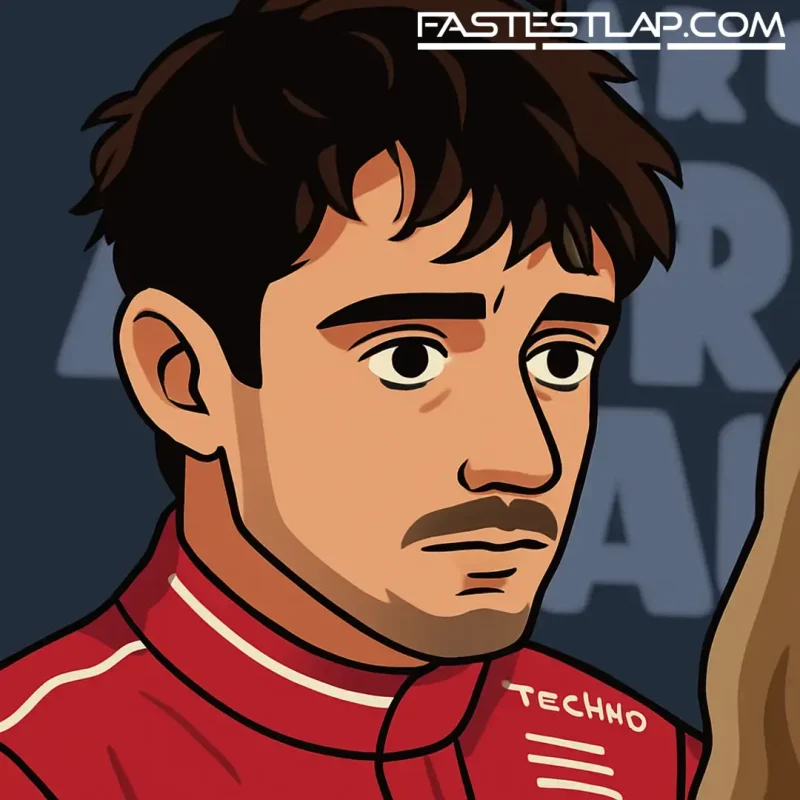Mika Hakkinen’s advice to Charles Leclerc is simple: breathe, stay the course, and trust that Ferrari will come good. It’s the kind of counsel only a double World Champion who once waited out the storm at McLaren can give—and he’s giving it now, just as the noise around Leclerc and Maranello starts to rattle the windows.
Leclerc’s seventh year in red has been a grind. The 2022 runner-up—whose title tilt was undone by a cocktail of strategy misfires, reliability pain and a few of his own errors—has spent too much of late explaining why he can’t fight the McLarens or whoever’s setting the pace this week. After another downbeat Sunday, he summed it up with brutal clarity: “We don’t have the race car to fight with the guys in front… it just feels like we are passengers to the car.”
Those words landed heavily in Italy. Reports there suggest some Ferrari engineers weren’t amused by the tone, with leaks hinting at frayed tempers and strained lines of communication across departments. It’s the kind of story that tends to snowball in Maranello, and it has—cue the speculation about Leclerc’s future and whether he’d consider walking before the 2026 rule reset.
Nicholas Todt, Leclerc’s long-time manager, didn’t exactly pour cold water on it. “He’s not a kid anymore,” he said, noting that many drivers will wait to see who nails the new regulations before tying themselves down. Translation: the market will be hot, and Charles has options.
Enter Hakkinen, calm as ever. Speaking to the Hindustan Times, the Finn drew a straight line from his own late-90s loyalty to McLaren to Leclerc’s current moment. “I never gave up. I was very loyal to McLaren, with the management convincing me: ‘Mika, just wait… when we get all the aspects correct, you will win.’ It worked on my personal commitment. It’s going to work with Leclerc and Ferrari.”
There’s logic there. The 2026 regulations represent a complete reset—the biggest in a generation. The power units move to a near 50/50 split between internal combustion and electrical power, while the cars get smaller, lighter and far more aero-active. Think less train, more knife-edge. That opens a door Ferrari believes it can walk through with the right concept and execution.
“The cars are technically changing a lot for next year,” Hakkinen added. “Drivers will probably have to change their skills a little bit… Teams with great designers are going to do well. Teams who are not so experienced will have a lot of problems.” In other words, pick the right horse now, and you might just sprint out of the blocks when the lights go out on 2026.
There’s a counter-argument, of course. When you’ve spent years carrying the weight of Ferrari expectation, the idea of trying something different holds obvious appeal. Mario Andretti—World Champion, American racing royalty, and now a board member of the Cadillac F1 project—spelled it out with disarming honesty: he’d sign Leclerc “tomorrow, without a doubt,” but conceded Cadillac would “need a couple of years” before it could claim it deserves a talent like his. Tempting? Maybe. Immediate? No.
So what does Leclerc do? He’s in that rare space where he’s both central to Ferrari’s present and indispensable to its future. The team needs his speed and sensitivity to steer a complex 2026 car concept; he needs the team to stop burning Sundays on execution errors and start building momentum with upgrades that actually stick. Stick or twist, he’ll be a headline either way.
But Hakkinen’s take lingers because it’s grounded in something F1 veterans recognize: the long game. Staying doesn’t mean settling. It means demanding more, loudly, and aligning the whole factory behind a single idea—one that survives bad weekends and political tremors. Ferrari’s history shows it can do that. It just hasn’t done it often enough in Leclerc’s era.
The next few months will shape everything. If Ferrari’s pipeline delivers and the mood music from Maranello softens, the conversation cools. If not, the 2026 carousel spins faster, and Todt’s “very hot market” becomes reality.
For now, Leclerc’s dilemma is the sport in microcosm: faith versus impatience, heritage versus opportunity, and the ever-present hope that the next big reset is the one that finally puts you on the right side of history. Hakkinen made that leap with McLaren in ’98. Leclerc’s waiting for his. Whether it’s in red—or somewhere new—depends on what Ferrari does next.




